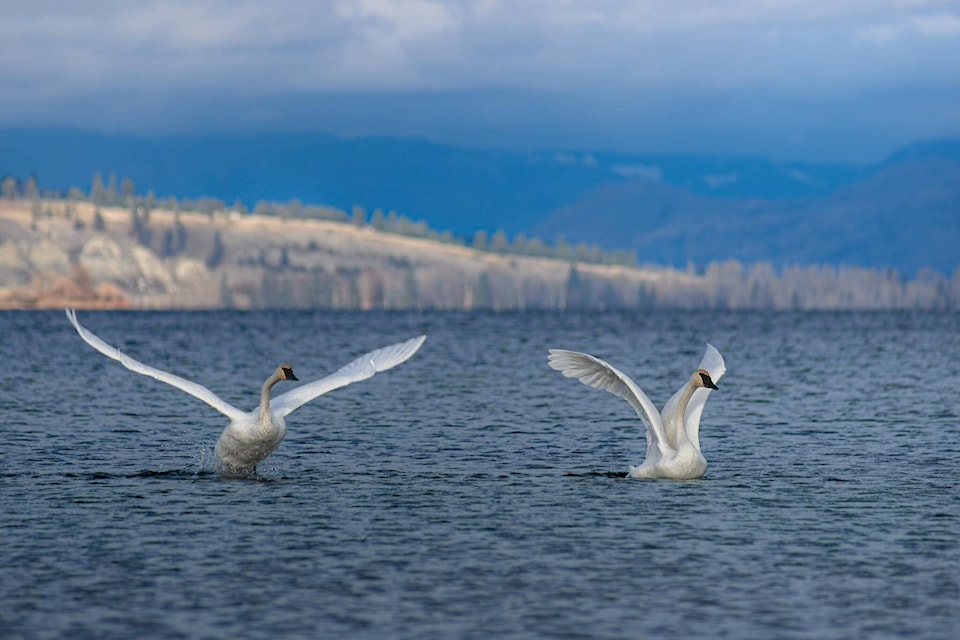You can’t miss them as you drive north along Highway 97 heading out of Penticton. The Trumpeter swan is an impressive bird species that has chosen to winter along the edges of Okanagan Lake.
They are difficult to photograph given there isn’t anywhere to pull over to get a picture. That’s why Penticton photographer Steve Heer was very happy to capture these beautiful birds with his camera just before the winter freeze set in.
Trumpeter and Tundra Swans winter on Okanagan Lake, as well as Vaseux Lake Bird Sanctuary, which was originally crested to protect Trumpeter swans and their winter habitat.
According to the Okanagan Similkameen Stewardship (OSS) , they are the largest living waterfowl species in the world, and also have the longest wingspan which can reach up to eight feet long.
So how to they withstand our frigid winters?
They have a unique five centimetre thick down layer of feathers that allow them to easily withstand temperatures down to -30 C.
They seem to choose the west side of Okanagan Lake alongside Highway 97. They can be seen just north of the Red Wing development and all the way near Sun Oka beach.
Trumpeter Swans were once close to extinction.
According to the OSS, this bird was specifically hunted for its meat, feathers for quill pens and soft swanskin powder puffs used for makeup. In 1933 it was believed that there were only 77 breeding individuals in Canada mostly due to over hunting, habitat loss, and lead shot poisoning. Due to a ban on hunting, reintroduction and conservation programs, and bird sanctuaries there are now 16,000 individuals in North America.
